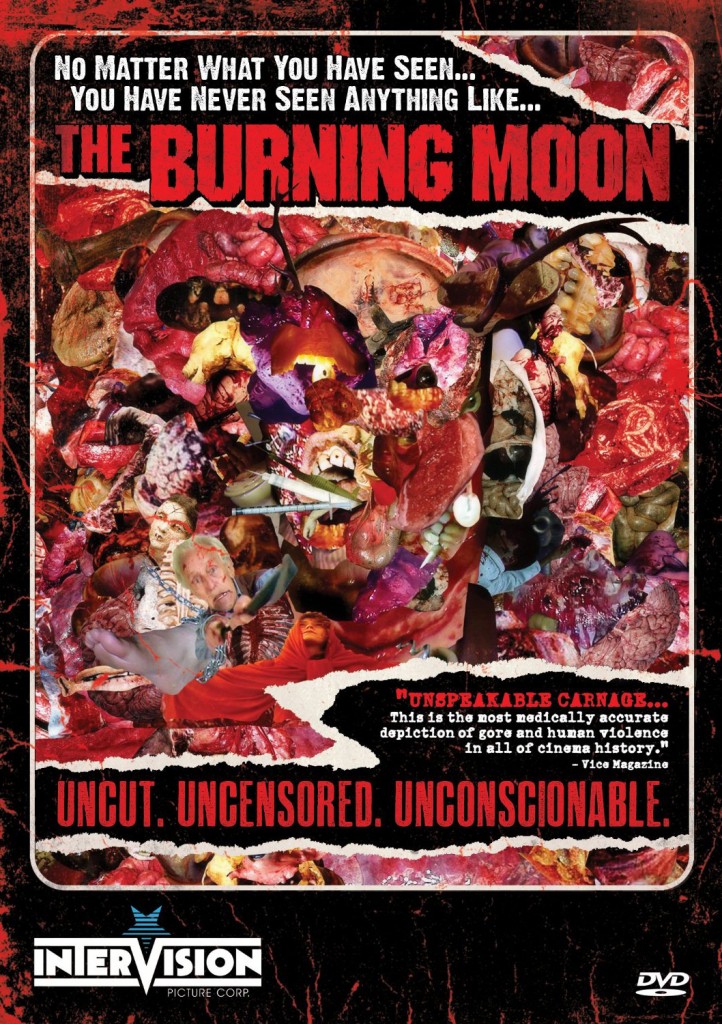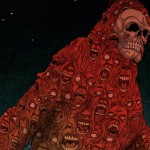AND IF TOMORROW THE MOON CAUGHT FIRE…
 THE BURNING MOON
THE BURNING MOON
Review by Adam Abouaccar
DVD buying generic cialis mexico rx Release by Intervision Picture Corp.
Olaf Ittenbach’s follow-up to his debut Black Past (and preceding his notorious splatterfest Premutos), 1997’s The Burning Moon is a reprehensible extravaganza. Banned in fourteen countries including buy levitra online viagra its native Germany, the film is entirely morally bankrupt and also happens to be available now for the first time (outside of bootlegs) from the seemingly-can-do-no-wrong Intervision Picture Corp. (The Secret Life: Jeffrey Dahmer, Sledgehammer, Things).
Shot, edited and originally distributed on videotape, The Burning Moon has then-28-year-old Ittenbach casting himself as one of the film’s leads. Peter price of propecia from canada is a smack-addicted teenager who still lives at home with his folks and blows off job interviews early to get properly drunk before his nightly gang fights. When tensions between him and his parents reach what is hoped to be their limits, Peter is forced by his father to stay home and babysit his little sister. Hardly one to take this sort of blatant humiliation lightly, the boy spaces out on heroin and decides to subject his sister to two of the most depraved, book burning prompting bedtime stories that round out this anthology.
The first story, Julia’s Love, revolves around a missed connection between a beautiful young woman named Julia and Cliff, an equally young cialis levitra viagra compare and beautiful escaped lunatic with a history of murder. Julia, who has had one too many crazy boyfriends in the past, decides to cut a blind date short when she fears she may have met another one. What follows is Cliff’s response to Julia’s rejection in a setpiece of glorious craftsmanship and creativity on behalf of both Cliff and special effects architect Ittenbach. This segment is sure to spark instances of laughter. Whether this laughter is reactionary to The Burning Moon’s sense of humour or simply a coping mechanism is as of now uncertain
Despite his sister’s protests, Peter follows Julia’s Love with a second story, The Purity, about a small-town priest in the late 1950s with a penchant to please Satan by raping and sacrificing local women. Father Ralf is able pursue his passion at great length because any blame immediately shifts to a relatively simple-minded farmer who is sure to meet his end once the townspeople find ample reason to get rid of him. Though varying little in terms of tone from Julia’s Love, The Purity kicks things up into a whole other spectrum with possibly the most preposterous take on hell ever taped. Spanning about one third of the film’s final act, Ittenbach’s hell has to be seen if only for its scale. Devoid of dialogue or interaction between characters outside of torture, the scene displays a slew of men, women and things in various states of tribulation with little intention of slowing down, despite our pleas. A personal favourite from the piece was learning what it looks like when a man takes an effective but slow power drill to his teeth. The Burning Moon satisfies all expectations of excess set up from the film’s start. For that matter, it is safe to say that this movie comes very close to making good on the promised spectacle depicted on the DVD’s objectively beautiful cover.
With regard to the quality of the transfer, little can be said in terms of sound and picture quality, as they are both limited by the film’s native VHS format. However, the low-grade, shot-on-video aesthetic widely contributes to a pervasive sense of uncanny-fuelled discomfort and despite what it was clearly shot with, The Burning Moon does not feel amateur. It might be 1.33 video but in terms of composition and movement, the camerawork is very film-like. This might very well be ascribed to the fact that the cinematographer had only ever worked with 8mm before signing on to the production. All this and more is learned from the 47 minute long making-of featurette included on the Intervision disc. Fun fact: because stuntmen charged way too much for what director Olaf Ittenbach needed, Ittenbach decided to abandon the idea of hiring one altogether and performed all of the stunts himself!
It might be an acquired taste, but it would be unfair to say that The Burning Moon absolutely requires a certain kind of person to appreciate it. At the very least, you have to stand back in awe at the lengths that the team went to get the briefest of insert shots, or the 101 ways dry ice was incorporated for added effect. Particularly for fans of shot-on-video gore or simply those that can appreciate good home video, this is a fine release from a solid imprint thus far. Olaf Ittenbach has not slowed down since The Burning Moon, working as both director and special effects supervisor on countless projects that followed. No stranger to Montreal or Fantasia, Ittenbach was a Fantasia guest in 2001 to screen his film Legion of the Dead. His latest work, Savage Love 666, is due to be released later on this year.

 April 1, 2012
April 1, 2012  No Comments
No Comments






